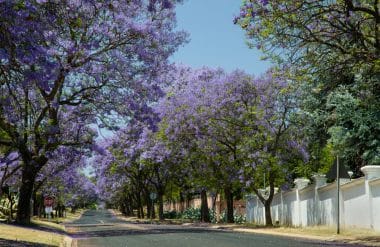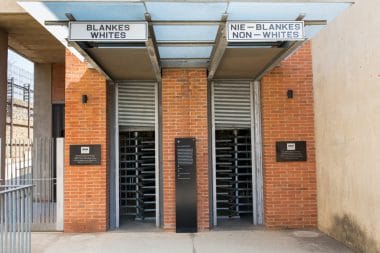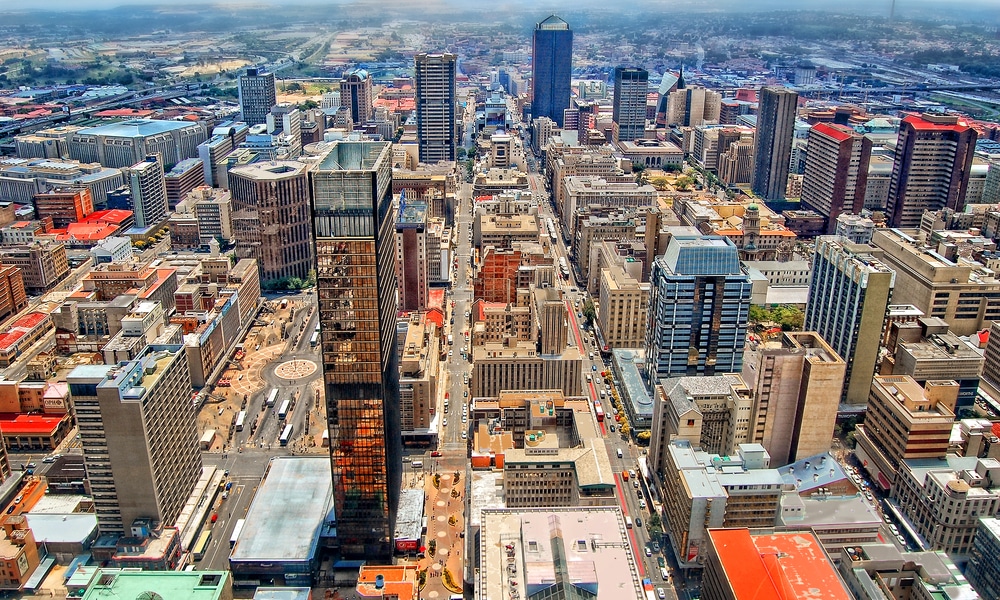Johannesburg, or “Joburg” by the locals, is not only the largest city in South Africa, but also the economic and social center of the country. Today, almost 10 million people live in Johannesburg and the surrounding area.
Until 1886, Johannesburg was still an insignificant desert settlement, until the European Gergio Harrison discovered an important gold vein under the city, which brought an economic upswing to the region in the coming years and also gave Johannesburg the nickname “City of Gold”. The gold rush past is omnipresent in the city. In front of the city gates, a former gold mine can still be visited.
Johannesburg’s most famous sights
Maboneng Neighbourhood

The Maboneng district, located in the east of the city, is probably the coolest district in Johannesburg. An ideal starting point to explore the diverse culture and eventful past of this African metropolis. Maboneng was once considered one of the most dangerous places in Johannesburg. Today, it is one of the safest neighborhoods, where tourists can usually still move safely after dark.
Maboneng has become a trendy district with hip restaurants and cafés and invites you to walk and explore. The Arts on Main Food and Design Market is particularly recommended. Quasi the source of the gentrification of the district, where you can buy everything from antiques to falafel sandwiches.
Gold Reef City

The small town of Gold Reef City is a replica of Johannesburg during the gold rush in the region and stands right next to an actual gold mine. Special highlights in Gold Reef City include a replica of the living quarters of the former workers, a brewery, restaurants, a hotel and a Victorian funfair. A small museum also vividly tells the story of the gold diggers in South Africa and what influence they had on the country.
Johannesburg Zoo
If you can’t make it to the Kruger National Park or would like to make animal exploration a little easier, the Johannesburg Zoo is the right place for you. More than three hundred different species of animals can be found here, including some very rare exotic specimens. The focus is mainly on African animals. There is interesting information about all animals and on a tour you can learn more about the animals of South Africa, their peculiarities and endangerment.
Apartheid Museum

An absolute must for history buffs and visitors to Johannesburg is the Apartheid Museum. This deals with the dark and not too distant part of racial segregation in South Africa. As soon as you enter the museum, an oppressive feeling is created – there is an entrance for whites and one especially for blacks.
The exhibits include photos and films, but also letters and documents, thus telling the story of racial segregation. Even if some of the film footage, for example of the suppression of the student uprising in Soweto in 1976, is sometimes very graphic, a Besch in the Apartheid Museum is informative and recommended.
Soweto Bike Tour

The Soweto district, which is often portrayed in the media as a dangerous slum, is the largest township settlement in the country and is located about 15 kilometers outside the city. It is home to about 3 million people and is best discovered on a bike tour.
There are various providers who take their guests on a tour of the district and give an insight into the life of the townships. Often, real apartments are visited, original street food is tasted and sometimes even a local sporting event or similar is visited. Nelson Mandela’s former house is also located in Soweto. Today it is a witness to the horror of apartheid.
Constitution Hill
The former Constitution Hill prison is now a museum and memorial to the effects and inhumane conditions during the apartheid era in South Africa. During a tour of the old rooms, visitors learn interesting information about the former prisoners. These included Mahatma Gandhi and Nelson Mandela. You learn a lot about the prison conditions and the horror that happened here at the time.
Right next to the prison is the Constitutional Court of South Africa. If there is not a hearing taking place, the courtrooms can also be visited.
Liliesleaf
Just outside the city, in Rivonia, lies Liliesleaf Farm. It once served as the secret headquarters of the banned ANC and was the headquarters of the protest party before it was violently stormed by the police on 11.07.1963. Today, the place acts as an open-air museum and, in addition to a spacious park, also offers the old farmhouse and the outbuilding where Nelson Mandela once hid. There is an exhibition about apartheid in the building, and there is also a café on the premises.
The best specialties in Johannesburg
As we all know, the way to a man’s heart is through his stomach and that’s exactly how it is with Johannesburg. The city is home to some great restaurants where visitors can experience traditional African cuisine.
Epicurus
Epikur is one of the hippest restaurants in the city. It serves delicacies such as ostrich fillet with butternut filling, umphokoqo with amasi, vetkoek fritters stuffed with spicy minced meat and chakalaka radish and venison chop with biltong butter and sweet potatoes. Epicur Restaurant is located in the Sandton neighbourhood and due to the popularity of the venue, it is advisable to make a reservation before visiting.
Lucky Bean
The Lucky Bean restaurant is located in the Melville district and serves generous portions of classic South African dishes. Highlights include the South African Snoek, which is baked with whole apricots or ostrich bobotie meatballs. Ostrich burgers and vegan burgers made from local ingredients are also recommended. The desserts at Lucky Bean are also excellent.
Mootee Bar
Just around the corner and also in the Melville district is the Mootee Bar, which specializes mainly in African drinks. But the food here is also impressive and South African delicacies are on the menu. For example, springbok rolls with spinach, sun-ripened tomatoes and caramelized onions or eggplant curry with baby carrots grown in the city.
Special features in Johannesburg
In the media, Johannesburg is often presented as a criminal city where tourists are constantly attacked and robbed. This depiction is quite exaggerated, but it is advisable to exercise a certain amount of caution in the city. For example, visitors should no longer walk after dark and some districts should be avoided altogether.
Können wir Ihnen helfen?
Benötigen Sie Unterstützung bei Ihrer Reiseplanung oder weitergehende Informationen zu einzelnen Reisezielen? Wir freuen uns über Ihre Kontaktaufnahme.


